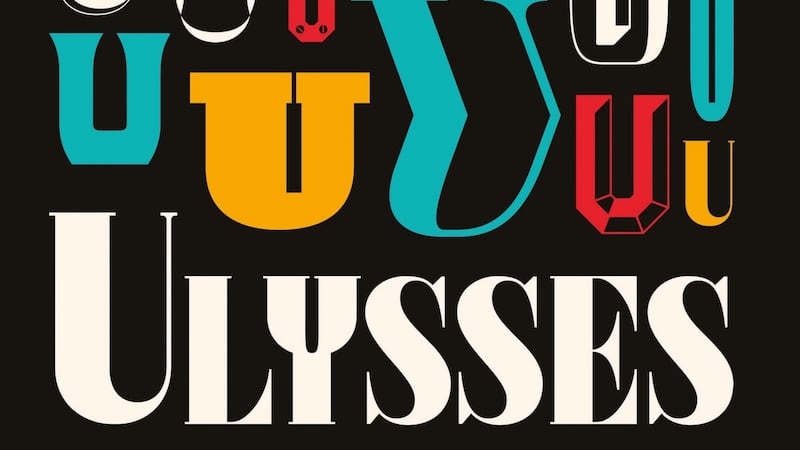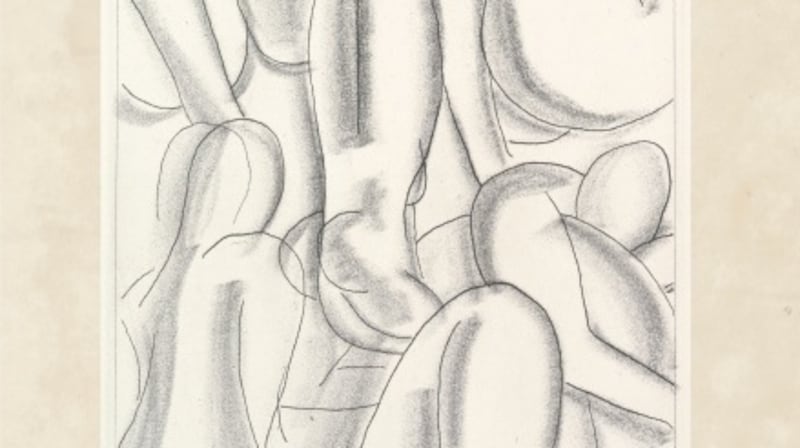Ulysses: A Reader’s Odyssey (New Island, 324pp, €15.95) by Daniel Mulhall
Ulysses Unbound: A Reader’s Companion to James Joyce’s Ulysses (Penguin, 352pp, €9.99) by Terence Killeen
James Joyce’s Ulysses is in the spotlight more than ever in 2022, as February 2nd marks the centenary of its first publication. A lone copy of the book with its distinctive blue cover was given pride of place in the window of Shakespeare and Company in Paris by its enterprising publisher, Sylvia Beach, on February 2nd, 1922, Joyce’s 40th birthday.


Seen by some as a masterpiece, it was also at the time held to be scandalous and unpublishable. Ulysses now is no longer censored or denigrated on moral grounds. We all have ready access to it in many different forms, online and in print. But do we view Ulysses differently a century after its first appearance?
In the Proteus episode, Stephen Dedalus thinks: “Who ever anywhere will read these written words?” His private musing acts as an emotional appeal by Joyce on behalf of his revolutionary text. The issue of who can read Ulysses and claim ownership of it is still a besetting one. Ulysses is a beloved and revered text, but remains daunting.
Daniel Mulhall’s Ulysses: A Reader’s Odyssey and Terence Killeen’s Ulysses Unbound: A Reader’s Companion to James Joyce’s Ulysses provide timely reflections on these matters. Both books are designed as guidebooks for general readers, but they also reflect on the barriers to reading Ulysses and how attitudes to Joyce have changed, not least in Ireland. Both authors are lifelong readers and aficionados of Joyce, and their books bear the stamp of their years of active study and advocacy, but in quite different circles.

Daniel Mulhall has spent 40 years in the diplomatic service and is currently Irish ambassador to the United States. His book originated in a blog about Ulysses that he posted from 2018 on the Irish embassy website in Washington DC. Unsurprisingly, then, his view of Joyce is coloured by a diplomat’s awareness of the author’s international resonance. This cachet has to do with the symbolic value of Joyce, irrespective of whether people have read him or not.
Mulhall’s conversational guide to the 18 episodes of Ulysses hence is intended for readers and non-readers alike. It has some of the unvarnished immediacy of online exchanges. Mulhall does not set out to cover everything and disarmingly allows for the fact that some readers will skip portions of the text that they find too difficult. Refreshingly, too, he identifies the episodes of Ulysses he dislikes (Aeolus and Oxen of the Sun), but also is at pains to explain what parts of the book work best for him (Cyclops) and why.
A historian by training, Mulhall is particularly informative about the post-Parnellite political conflicts that colour many of the figures in Ulysses, both the central triad of Leopold Bloom, Molly Bloom, and Stephen Dedalus, and many of the lesser characters. Joyce, for Muhall, writes on the cusp between two different Irelands, a British colony in upheaval at the start of the 20th century, and a modern state in formation from 1922 onwards.
‘Forensic portrait’
Powerfully, he argues that Joyce and Ireland for him are indissociable and that he retains a burning relevance today because he undertook “such a lavishly forensic portrait of the country”. In defiance of those who prize Joyce for his experimentalism, he declares ultimately that Ulysses is a character-driven novel and that it is our investment in Joyce’s key protagonists, especially Leopold Bloom, that charges our relationship to this work.
Terence Killeen’s Ulysses Unbound is now in its fourth edition and third imprint. The current text produced by Penguin follows previous editions by Wordwell Press and University of Florida Press. A former journalist with this paper, Killeen is an impassioned and meticulous Joyce scholar and teacher.

His book positions itself differently as a result and, as its frequent republication bears out, it has become a cult classic among guidebooks, especially for those involved in teaching Joyce at universities, and duly features on up-to-date bibliographies such as the listing in Daniel Mulhall’s book.
Killeen’s guide pulls off the impossible in that it pitches itself at the seasoned Joyce scholar as well as the novice reader and student. It is valued by Joycean experts because of its accuracy, compression, and liveliness. But it keeps it sights set on readers who are new to Ulysses and highlights the struggles they will undergo, for example in deciphering the Sirens and Oxen of the Sun episodes. The illusion of academic mastery is not subscribed to by Killeen.
Like Mulhall, Killeen provides accounts of the 18 episodes of Ulysses. He endeavours to give an overview of them but also to “unbind” them, akin to Penelope in Homer who undoes by night what she has woven by day. Each chapter is multi-perspectival, providing readers with a paraphrase of the narrative, a reflection on the Homeric parallels, a glossary, a discussion of the style, and an interpretive commentary.
While never shirking the complexity of the text, Killeen’s guide enables everyone to approach Joyce with fresh eyes and to keep learning. His commentaries, in particular, furnish numerous incisive insights, such as his finding that there is an “atmosphere of repressed hysteria” in Sirens, or that Molly Bloom in Penelope unbalances the book and ends up outpacing Joyce.
Killeen’s overall understanding of Joyce is instructively different to that of Mulhall. As Colm Tóibín astutely notes in his preface, he is particularly attuned to the stylistic and tonal shifts in Joyce which he adeptly explores. Joyce is, for Killeen, a supreme inventor of styles and not just of indelible characters.
Additionally, in an examination of the reception of Ulysses, 1922-2022, added to this edition, he comes to the conclusion that readers’ attitudes changed in the 1980s when it was discovered that Joyce’s text was not fixed and that it had to be revised in light of surviving drafts and manuscripts.
This mobility and negotiability are for Killeen the overriding features of contemporary approaches to Ulysses. They are virtues too of these two very different guides to Joyce which will undoubtedly initiate many further readers into the pleasures and difficulties of Ulysses in its centenary year.
Anne Fogarty is Professor of James Joyce Studies at University College Dublin.











